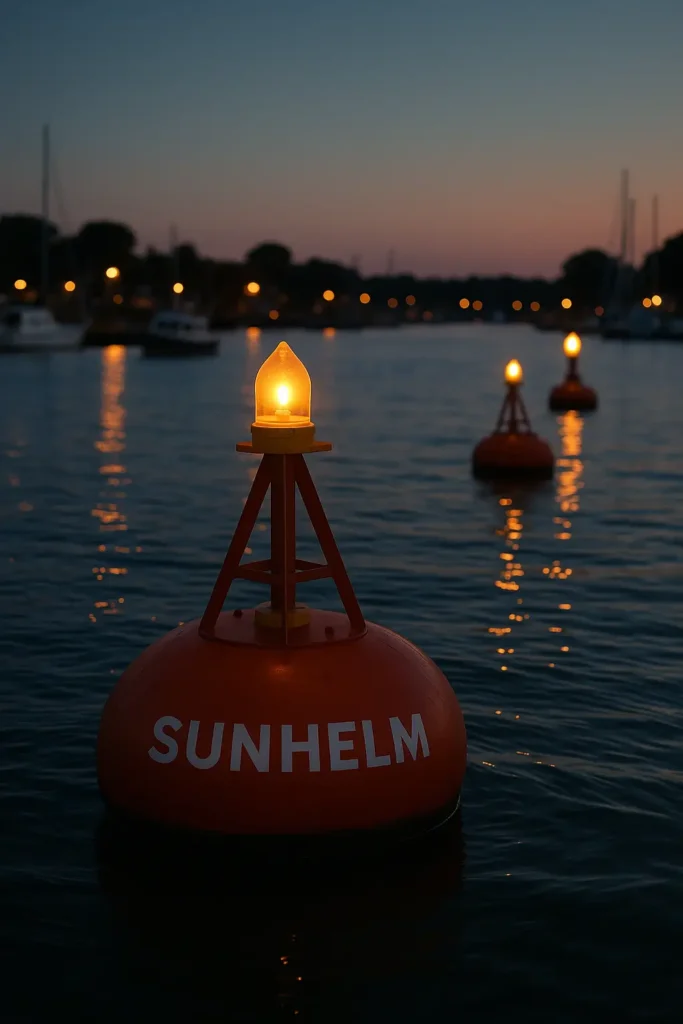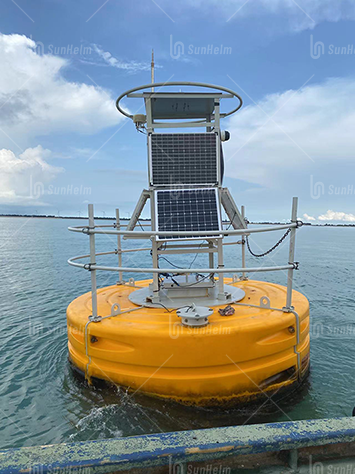Why Buoy Maintenance Is Necessary and Urgent
Boat owners and harbor managers often delay buoy upkeep—until a storm shifts a navigation marker, or a mooring fails, triggering expensive rescue operations and posing hazards to vessels and marine life. Last summer, calmer seas allowed crews to refresh navigation buoys—avoiding costly wintertime replacements—demonstrating how timely servicing reduces risk and downtime. As Sunhelm, we’ve seen firsthand how a neglected buoy can drift off station during rough weather, causing serious disruption and cost. That’s why maintaining marine buoys is not just good practice—it’s essential for maritime safety and operational efficiency.

Featured Snippets
- How often should navigation buoys be inspected?
Most experts recommend seasonal inspections, ideally in calm weather months, checking hull integrity, visibility, lights, power systems, and mooring hardware. - What is the maintenance checklist for marine buoys?
- Remove growth—scrape and pressure‑wash hulls.
- Inspect lights, batteries, solar panels, and sensors.
- Check anchor chains, shackles, and mooring lines for wear/corrosion.
- Touch up paint, clean markings.
- Document date, location, and repairs.
- Why pair marine buoys with marine fenders?
Combining marine buoys and marine fenders ensures secure, cushioned docking—protecting vessels and structures alike during mooring operations.
Imagine a harbor at dusk: Sunhelm buoys glowing softly, perfectly positioned—protecting your boats and guiding traffic. No stranded sailors, no sudden accidents. Curious how to keep it that way? Read on for hands‑on, expert‑level care tips that will maximize buoy life and ensure peace of mind.

Your Step‑By‑Step Buoy Care Routine
1. Inspect and Clean Regularly
Lift each navigation buoy from the water to scrape off marine growth, pressure‑wash surfaces, and re‑paint faded markings. A clean buoy stays visible—and effective.
2. Check Electronics & Power
Verify navigation lights, sensors, solar panels, and batteries are fully operational. Replace or recharge components to maintain consistent visibility day and night.
3. Maintain Mooring Gear
Inspect chains, shackles, swivels, and mooring lines for corrosion, wear, or fraying. Lubricate as needed and schedule timely replacements.
4. Document Everything
Record date, location, defects, and repairs. These notes support future planning and regulatory compliance .
5. Seasonal Tweaks
In colder regions, swap in ice‑resistant buoys during winter and restore standard markers in spring. Heavy weather may displace buoys—requiring extra check‑ups.
Pairing Buoys and Fenders: A Docking Upgrade
When used together, marine buoys (for navigation and mooring) and marine fenders (cushioning protection) make Sunhelm’s docking solutions stand out. Fenders absorb impact forces, safeguarding hulls during berthing. Studies show that adding fenders to buoyed docks enhances operational safety and prevents structural damage. Provide cushioned contact and precise guidance: that’s Sunhelm’s promise.
Quick Safety Tips
- Use UV‑resistant paint to improve durability and visibility.
- Opt for environmentally friendly cleaning products to avoid harming marine ecosystems.
- Coordinate periodic maintenance contracts to avoid emergency costs.
FAQ
- What causes buoys to drift off station?
Storms, ice, strong currents, and degraded moorings can displace buoys unexpectedly. - Can I clean buoys without removal?
No—buoys need dry‑dock conditions to clean underwater surfaces and inspect hardware properly. - How long do marine buoys last?
Lifespan varies: steel buoys need repainting every few years; PE or foam‑filled types may last 10–15 years with good upkeep. - What fender types work best with Sunhelm buoys?
For Sunhelm, we recommend floating rubber or pneumatic fenders—they absorb shock, adjust to tide changes, and are easy to attach.
Final Takeaway
Maintaining marine buoys is essential—not optional. With structured inspections, timely cleaning, gear upkeep, and strategic pairing with marine fenders, Sunhelm enhances vessel safety and harbor longevity. Start your maintenance routine today—keep your waterways safe, visible, and storm‑ready.


